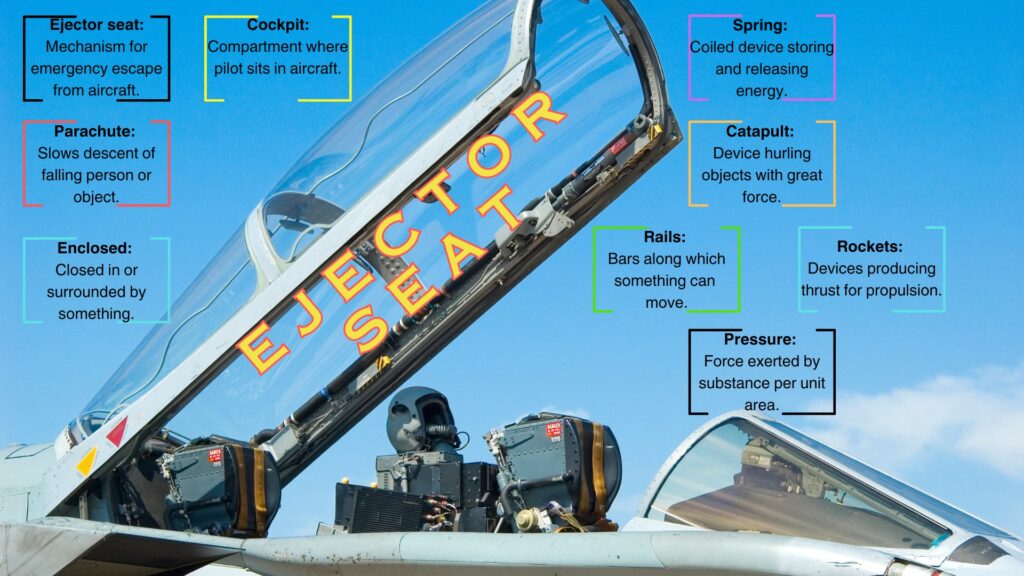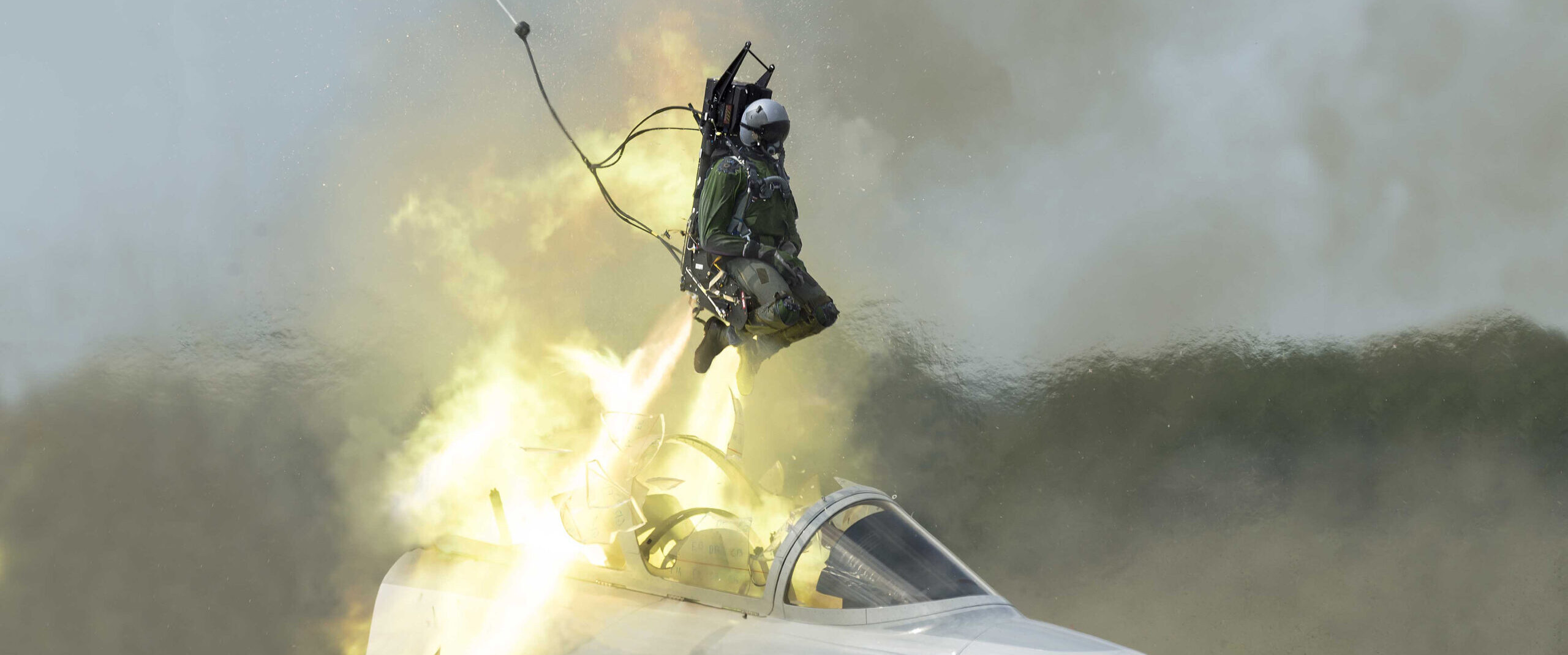
As soon as the Wright Brothers completed the very first successful flight in December 1903, questions began to be asked about how pilots could escape from an aeroplane if there was a problem. The early days of aviation were filled with danger.
The parachute was a solution. The first few planes to fly were not well made. The pilot would sit behind the propeller towards the front of the plane. There was no cover above his head, just open space. Once the parachute had been invented, it was reasonably straightforward for the pilot to slip over the side of the plane and parachute safely to the ground – provided the parachute opened.
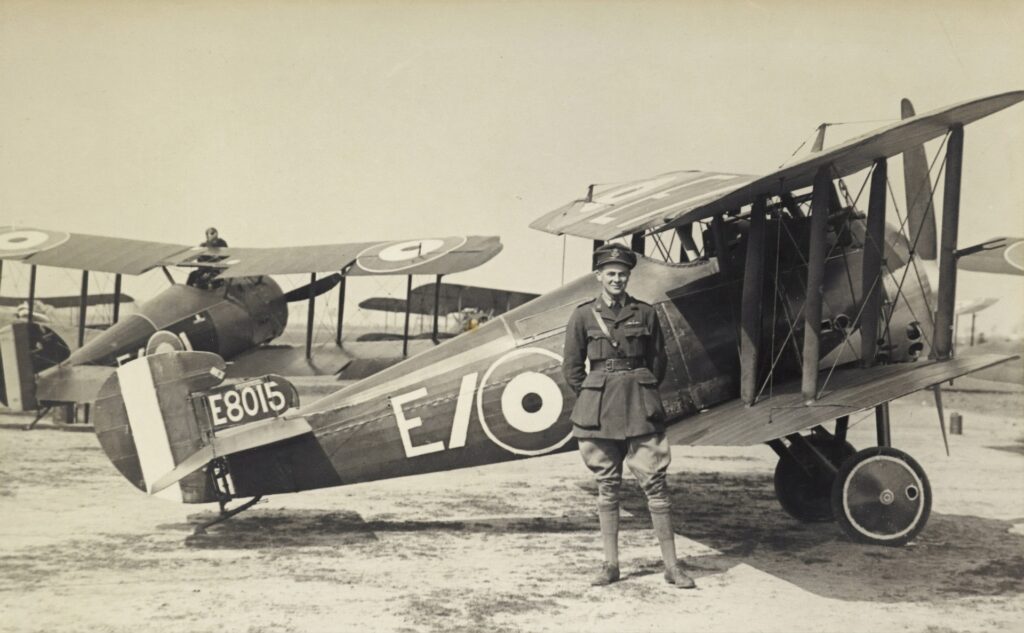
During World War 1, the Royal Flying Corps refused to allow pilots to carry parachutes with them when in combat. They believed that pilots would be tempted to jump out of their plane when they were in danger from the enemy.
As time progressed, planes became faster and more solidly built. The pilot also began to sit inside an enclosed cockpit. It was no longer possible to slide out. What’s more, it was discovered that once a plane was travelling at a speed greater than 240 kilometres per hour, the wind would force the pilot to remain in his seat. What was required was a method to force the pilot out of the top of the cockpit at a great speed. This was the beginning of the ejector seat.
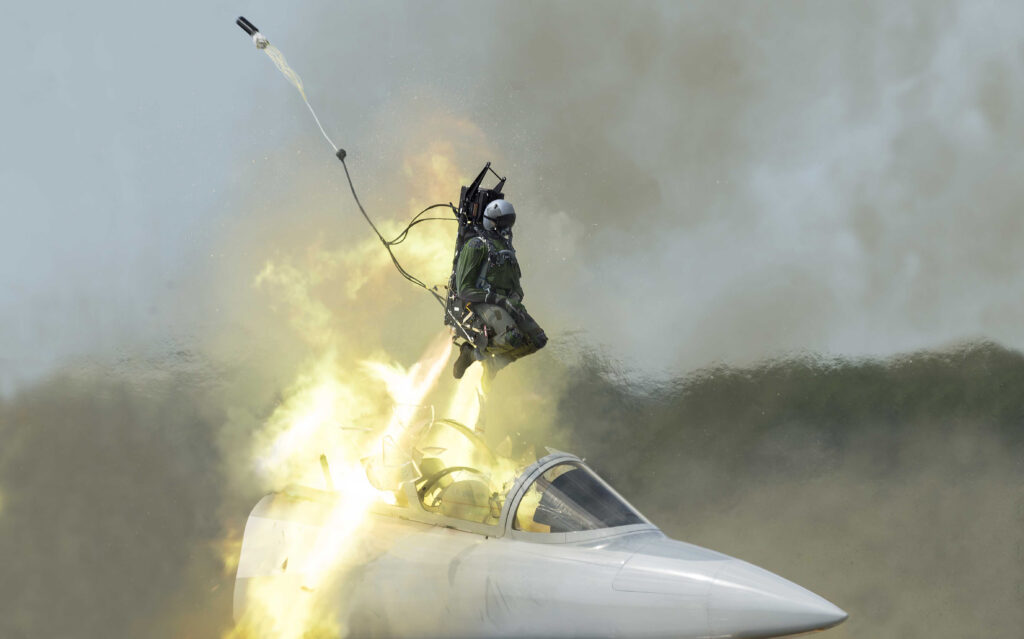
The first ideas were based on a powerful spring being placed beneath the pilot’s seat. The spring, when released, would smoothly eject the pilot to safety.
In more recent years, ejector seats have become a very complex piece of equipment made with thousands of parts. Today, a catapult shoots the pilot out from the top of the plane. He remains in his seat, which is guided by rails. This ensures he exits the aircraft at the correct angle. Once he is clear of the plane, small rockets are released that push him further from the aircraft. The parachute is then opened, and he is able to glide to safety.

Many military aircraft today fly faster than the speed of sound – 1,207 kilometres per hour. When a pilot ejects from a plane travelling at that speed, there is tremendous pressure on his body. It’s very dangerous. The whole ejection process takes place in less than four seconds. Whilst it’s not a pleasant experience, it is far better than remaining inside the damaged aircraft.
QUESTION:
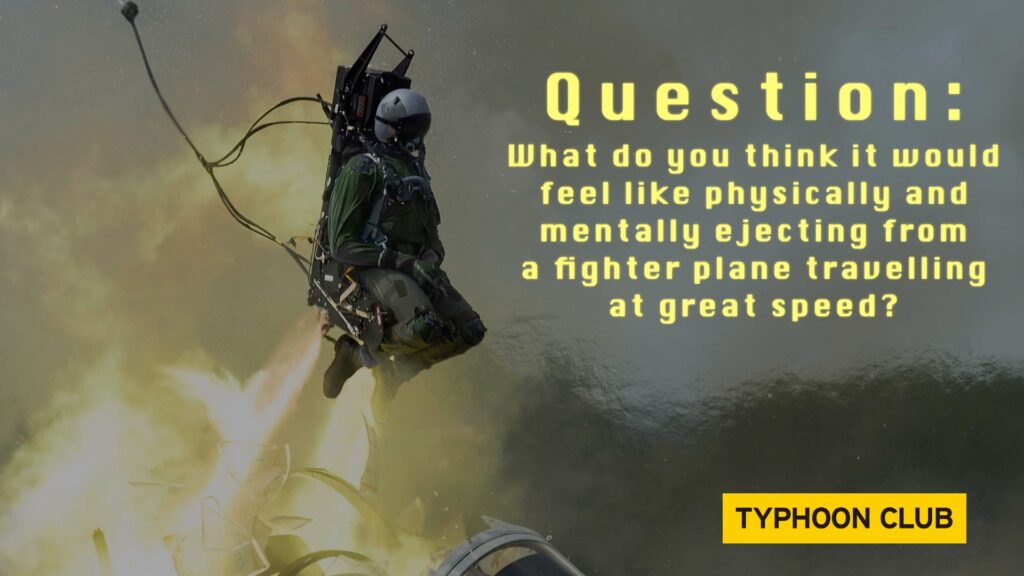
VIDEO: Today, it’s possible to jump from space with just a parachute!
VOCABULARY
